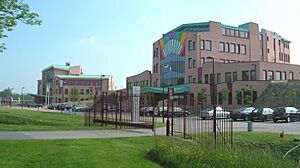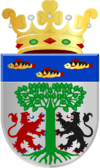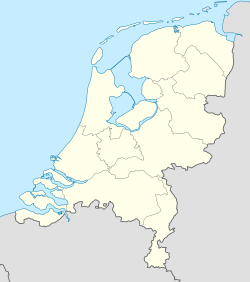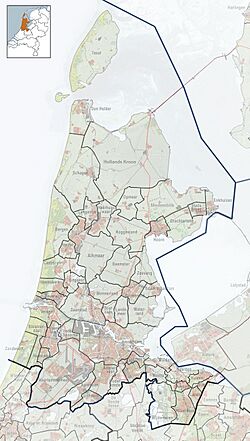Wognum facts for kids
Quick facts for kids
Wognum
|
||
|---|---|---|
 |
||
|
||
| Country | Kingdom of the Netherlands | |
| Constituent country | ||
| Province | North Holland | |
| Municipality | Medemblik | |
| Area | ||
| • Total | 13.19 km2 (5.09 sq mi) | |
| Elevation | 0.1 m (0.3 ft) | |
| Population
(2021)
|
||
| • Total | 6,375 | |
| • Density | 483.32/km2 (1,251.8/sq mi) | |
| Time zone | UTC+1 (CET) | |
| • Summer (DST) | UTC+2 (CEST) | |
| Postal code |
1687
|
|
| Dialing code | 0229 | |
Wognum is a town in the Netherlands. It is located in the province of North Holland. Wognum used to be its own municipality. It was given special city rights in 1392. However, it lost these rights in 1426. In 2007, Wognum joined with the towns of Medemblik and Noorder-Koggenland. They all became part of a larger municipality called Medemblik.
Contents
Towns and Villages
The area that used to be the municipality of Wognum included several smaller places. These were the towns and villages of Nibbixwoud, Wognum itself, and Zwaagdijk-West. It also included a tiny village called Wijzend.
History of Wognum
Wognum started to form around the year 900. This is known from things found by archaeologists. There is also proof that people lived in this area much earlier. This was during the Bronze Age. Old tools like hand axes and arrowheads were found here. They were found between the streets of Oosterwijzend and Dorpsstraat in Wognum.
Early Mentions
The town was first written about in 980. It was in a church list from the Abbey of Echternach. At that time, it was called Wokgunge. In another old paper from 1063, it was named Woggunghem. There was a small church building, or chapel, in Wognum. It belonged to the Abbey of Heiloo. This chapel was on the same spot where the Reformed Church of Wognum stands today.
What Does the Name Mean?
Over time, the name Wognum was spelled in different ways. Some spellings included Wognem (1083), Woghenem (1156), and Woggenum (1544). The name might mean "the place of the person or family named Wok or Wokke." Sometimes, people even wrote it as Wochnum by mistake.
Wognum's Location
Wognum is built near an old stream. The land along this stream is sandy. Just outside the main part of town, it sits between Oude Gouw and Kerkstraat. It is also near old peat streams at Baarsdorpermeer and Lekermeer. This area is a leftover from when people started to make land usable in the early Middle Ages. The Kromme Leek is one of these streams. It starts at the Baarsdorpermeer. It then winds its way through Wognum and Zwaagdijk. Finally, it ends at Medemblik. The stream's winding path was kept as much as possible. This happened when the land was later reorganized between Wognum and Medemblik.
How People Made a Living
In the 15th century, fishing was the main way people earned money in Wognum. In the 17th century, Wognum did very well. This was because of the shipping business in the nearby city of Hoorn. Even though Wognum was mostly a farming area in the 19th century, its coat of arms changed. In 1979, a new coat of arms was made for the new, larger municipality of Wognum. It included three fish, called basses. These fish came from the old coat of arms of Nibbixwoud, which had joined Wognum.
Farming Today
Today, there are thousands of fruit trees in both Wognum and Nibbixwoud. Growing fruit is a very important part of the farming in this area. Wognum itself has a mix of farm buildings and more modern town buildings in its center.
Railway Connections
Wognum is a stop on a special old railway line. This line is called the Hoorn–Medemblik heritage railway. It is a fun way to see the area.
Famous People from Wognum
Many interesting people have come from Wognum. Some of them include:
- John Appel (filmmaker) - a filmmaker
- Cor Bakker - a pianist
- Frans van Buchem - a doctor
- Edith van Dijk - a swimmer
- Jeroen Tesselaar - a footballer
See also
 In Spanish: Wognum para niños
In Spanish: Wognum para niños




